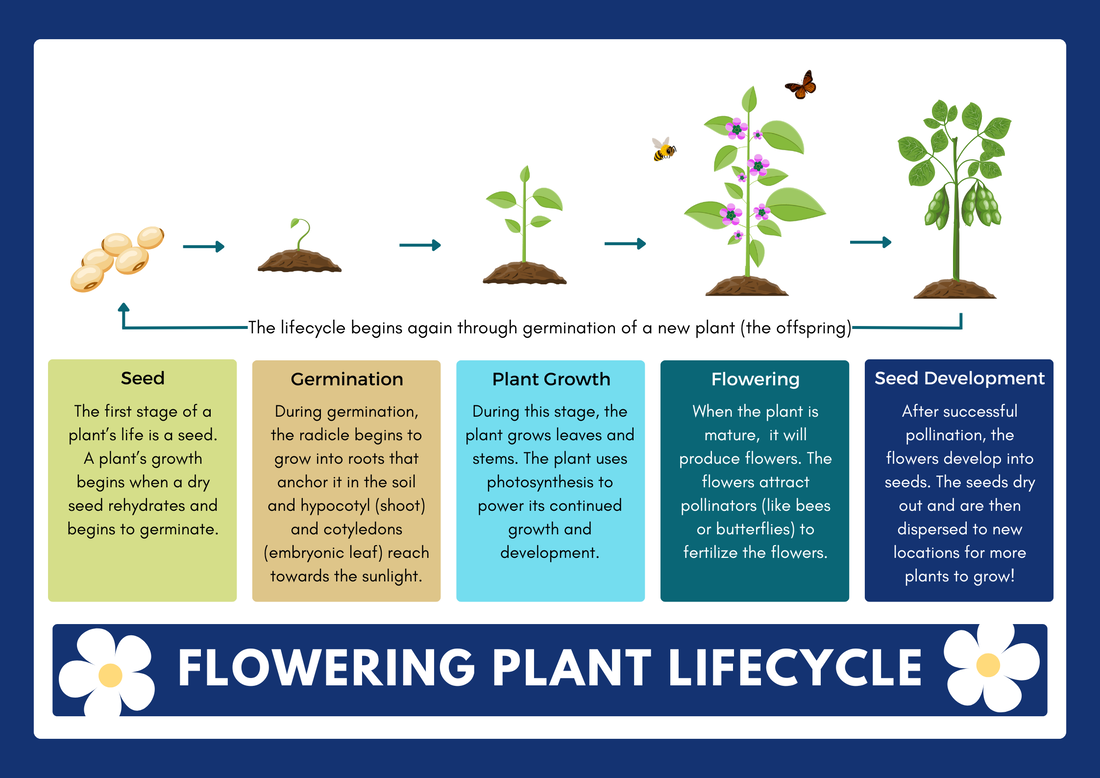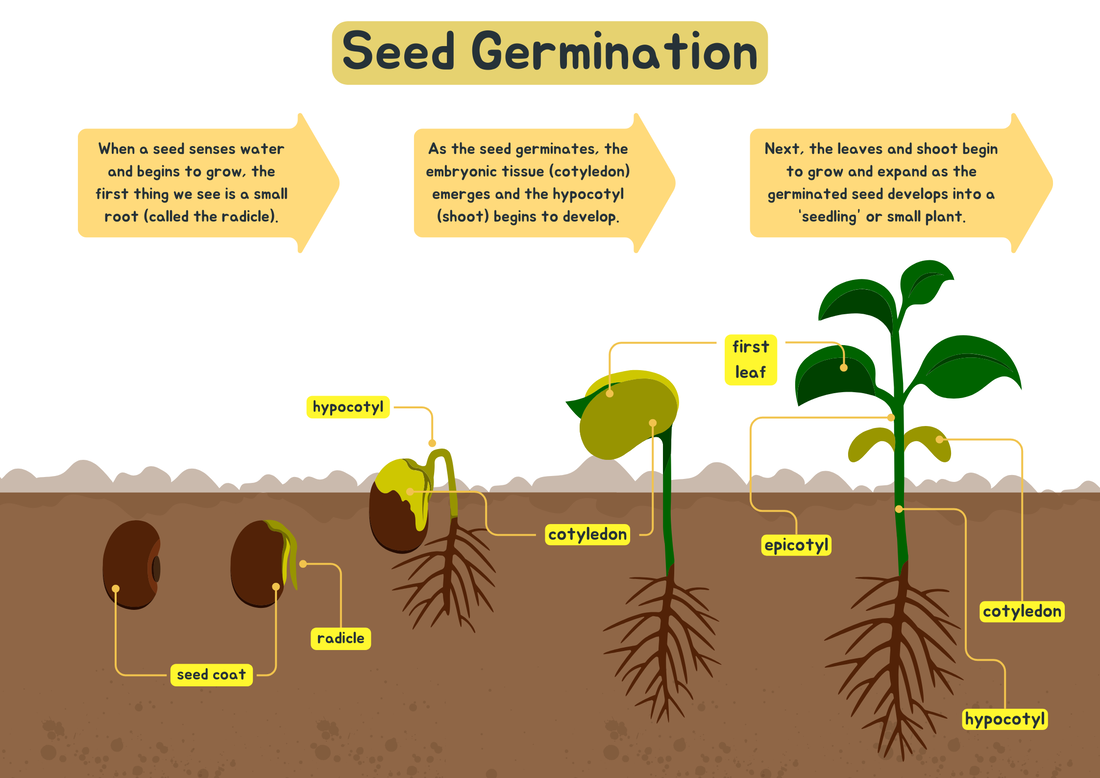SEED GERMINATION
Have you ever wondered what seeds are, how seeds develop, or how seeds transform into plants? These are questions that the Water and Life Interface Institute (WALII) researchers are asking too! On this page, you can learn about seeds, some of the research happening in WALII labs, and how you can make a ‘seed germination necklace’ at home.
What are seeds and how do they develop?
Seeds are alive! Seeds contain the embryo of a plant, meaning that inside every seed is the start of a baby plant. Seeds have an exterior shell (a seed coat) with the baby plant (embryo) inside and a food source (endosperm) for the baby plant to grow. Many plants grow from seeds that develop from pollinated flowers. Fully developed seeds from most plants are dormant and dry, like the beans you buy at the grocery store. But, when given the right conditions, seeds will ‘wake up’ and grow into new plants!
What is seed germination?
When dry seeds are exposed to water and the correct growing conditions – including the right temperature and amount of light – the seeds absorb the water (rehydrates) and the baby plant begins to grow. This process is called germination. The first visible step of germination is when the radicle (embryonic root tissue) emerges from the seed. The second visible step is when the hypocotyl (the first part of the stem) emerges from the seed. At this stage, the seedling is ready to grow its first true leaves and develop into a fully grown plant!
Why are WALII researchers interested in seeds?
Most mature seeds are extremely dry – they contain much less water than most living things on Earth. But, not all seeds can survive and germinate after being dry for long periods of time. Some seeds (called recalcitrant seeds) are desiccation-sensitive and only have a few days or months before they can no longer germinate. Other seeds can stay dry for decades and still have the ability to grow into new plants when given water. WALII scientists want to know how seeds develop, dehydrate, and can rehydrate. WALII researchers are also interested in studying how long seeds can stay alive in the dry state, and how we can help seeds overcome germination issues and grow into plants.
How to make a seed germination necklace!
If you have a seed, a plastic bag, a piece of string, and a cotton ball, you can make a germination necklace at home and observe the stages of plant development. Follow these instructions by the Oregon Agriculture in the Classroom Foundation.
Why isn't my seed germinating?
There are many reasons why seeds won’t germinate. The wrong temperature or the wrong amount (too little or too much) water, sunlight, or nutrients can cause seeds to remain dormant. Additionally, seeds may not germinate if they’re too old. WALII scientists are studying how seeds develop and age, how seeds sense and respond to their environment, and how seeds change from dormant to germinating. Follow WALII researchers and read WALII publications to learn more!















